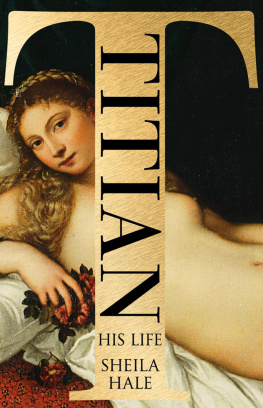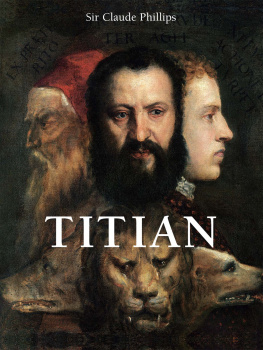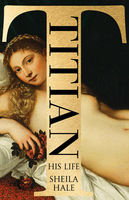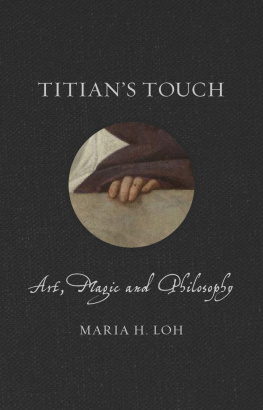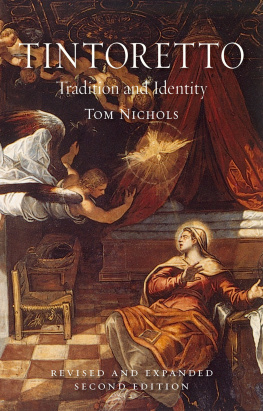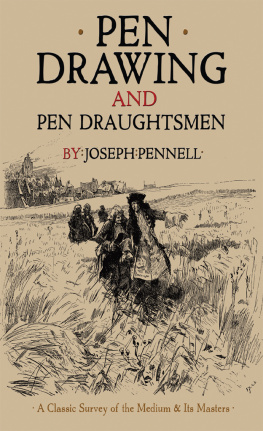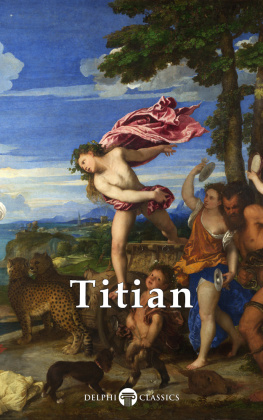Titian - Titian : his life
Here you can read online Titian - Titian : his life full text of the book (entire story) in english for free. Download pdf and epub, get meaning, cover and reviews about this ebook. City: New York, Italy--Venice, year: 2012, publisher: HarperCollins, genre: Detective and thriller. Description of the work, (preface) as well as reviews are available. Best literature library LitArk.com created for fans of good reading and offers a wide selection of genres:
Romance novel
Science fiction
Adventure
Detective
Science
History
Home and family
Prose
Art
Politics
Computer
Non-fiction
Religion
Business
Children
Humor
Choose a favorite category and find really read worthwhile books. Enjoy immersion in the world of imagination, feel the emotions of the characters or learn something new for yourself, make an fascinating discovery.
- Book:Titian : his life
- Author:
- Publisher:HarperCollins
- Genre:
- Year:2012
- City:New York, Italy--Venice
- Rating:4 / 5
- Favourites:Add to favourites
- Your mark:
- 80
- 1
- 2
- 3
- 4
- 5
Titian : his life: summary, description and annotation
We offer to read an annotation, description, summary or preface (depends on what the author of the book "Titian : his life" wrote himself). If you haven't found the necessary information about the book — write in the comments, we will try to find it.
Abstract: A biography of the Venetian artist, Titian and the evolution of his paintings
Titian : his life — read online for free the complete book (whole text) full work
Below is the text of the book, divided by pages. System saving the place of the last page read, allows you to conveniently read the book "Titian : his life" online for free, without having to search again every time where you left off. Put a bookmark, and you can go to the page where you finished reading at any time.
Font size:
Interval:
Bookmark:


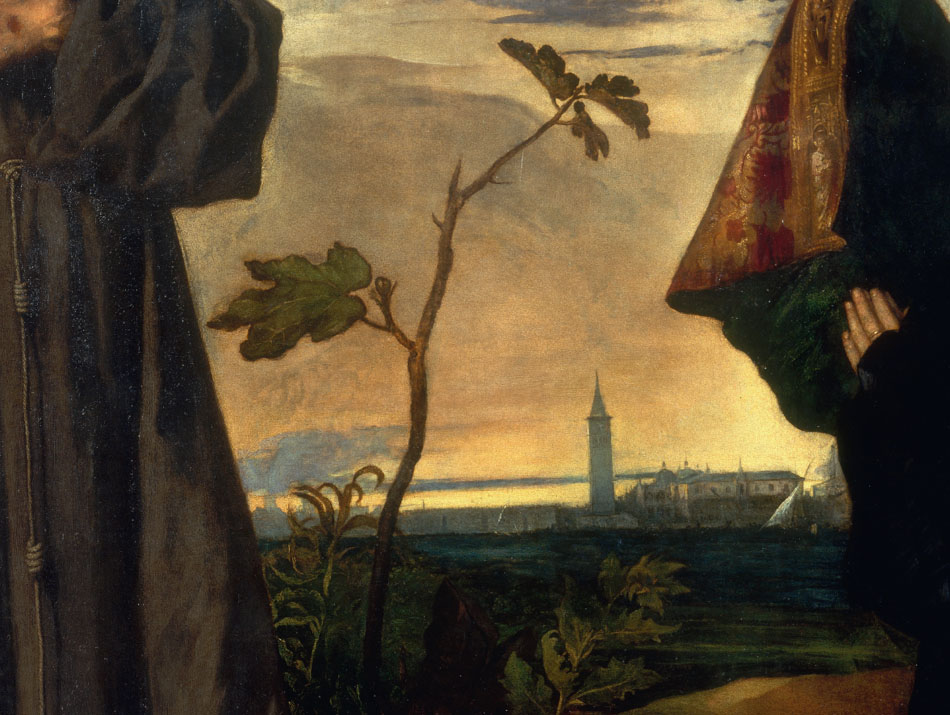
In memory of John
Titian was the sun amid small stars not only among the Italians but all the painters of the world.
Giovanni Paolo Lomazzo, Idea del Tempio della Pittura , 1590
A work of art is an act of cooperation, often of reluctant cooperation like an awkward marriage, between the author and the kind of society he lives in. When we know something of the character of this aggravating partner, that which was once stiff and monumental becomes fluid and alive.
V. S. Pritchett, In My Good Books , 1942
CONTENTS
Any style involves first of all the artists connection to his or her own time, or historical period, society, and antecedents: the aesthetic work, for all its irreducible individuality, is nevertheless a part or, paradoxically, not a part of the era in which it was produced and appeared.
EDWARD S. SAID, ON LATE STYLE , 2006
Titian lived and painted in tremendous times. In the decades before he was born, in a remote province of the Venetian Empire, the invention of movable type in Germany had unleashed an unprecedented and unstoppable spread of ideas and information across Europe and beyond. Columbus maiden voyage from Spain to the new world in 1492, when Titian was a small child, changed the European consciousness of the size and shape of the planet; and the bullion imported from the Americas brought with it massive inflation and eventually shifted the balance of trade and wealth from the Mediterranean to the Atlantic. In 1513, when Machiavelli published The Prince , the first modern work of political philosophy, Michelangelo had recently completed the ceiling of the Sistine Chapel, Raphael was at work on the four Stanze in the Vatican, and Leonardo da Vinci was an old man living in Rome. Four years later in the German town of Wittenberg Martin Luther, reacting against the sale of indulgences by Pope Leo X, posted his Ninety-Five Theses on the castle door. Few at the time predicted the consequences. Luther himself had not envisaged a split with the Catholic Church, and the word Protestant was not used until 1529. But by 1563 when Titian was in his early seventies and the Council of Trent sat for the last of the three sittings that set the agenda for the Catholic Reformation, northern Europe was irredeemably divided between Catholics and Protestants; and Venice, which had been the most independent of all the Italian city states and the least prescriptive about matters of religion, began to pay heed to the dictates of the Roman Catholic Church.
When Titian died in Venice in 1576 he was in his late eighties, and the Most Serene Republic had begun its long slow decline as a great trading power and artistic centre. He had spent the whole of his working life there, travelling as little as possible and only twice outside the Italian peninsula for two short visits to Germany. He had produced some 500 or 600 paintings of which about half survive. They are now scattered around the globe, most of them in public galleries from New York to California and Brazil; and across Europe from St Petersburg to Vienna, Berlin, Florence, London and Madrid, to mention only the largest collections. Despite frequent temporary exhibitions of his pictures it would be difficult for any one person to see all the originals and follow the extraordinary transformation of Titians style from the radiant, minutely realized masterpieces of his youth to the more freely painted works of his middle years, to the dark, tragic, sometimes terrifying visions of his last years.
More has been written about Titian than about any other Renaissance artist apart from Michelangelo. There were two biographies of him in his own lifetime: the Venetian writer Lodovico Dolces LAretino published in 1557 and Giorgio Vasaris Life of Titian in the second, 1568, edition of his Lives of the Artists ; two more in the next century by an anonymous writer who may have been a distant relative (1622) and by Carlo Ridolfi in his Marvels of Art (1648), as well as numerous letters written to, by and about him. Over successive centuries writers and artists have explored and described his paintings and the spell they cast. This book, however, is the first documented attempt since the pioneering Anglo-Italian art historians J. A. Crowe and G. B. Cavalcaselle published their Titian: His Life and Times as long ago as 1877 to chart Titians stylistic development through the story of his life and of the century in which he became the most famous artist in Europe, painter to its most powerful rulers.
Since Crowe and Cavalcaselle, art history has been taught in schools and universities as a specialized subject, and Titian Studies have become something of an academic industry. Archives in Venice and elsewhere have yielded much more evidence than was available in the nineteenth century, so that we now know more about Titians personality, family, friends, finances and relationships with his patrons than we do about most other Renaissance artists. Modern scientific techniques, furthermore, have enabled painting conservators to follow Titians working methods by looking beneath the surface of his paintings. Nevertheless, since no one person can do justice to an artist as great, protean and complex as Titian, I have allowed some of the many voices that have explored, praised and very occasionally doubted his genius to have their say.
I have tried where possible to correct errors of fact about Titian that have been repeated so often that theyve become almost canonical. There are, however, still blanks in our knowledge. Perhaps some will be filled as new evidence and paintings thought to have been lost are discovered. Nothing, however, will diminish the sheer visceral pleasure, the shock of recognition that we are looking at a kind of truth that few other painters have communicated, that has fascinated Titians admirers and followers for more than five centuries.
Most European currencies after Charlemagnes reform of the monetary system were accounted in pounds, shillings and pence: s d, or 1 lira = 20 soldi = 240 denari, like the British pound sterling before it was decimalized in 1971. Every country, and every one of the numerous Italian states, used its own silver-based coins for everyday transactions such as buying food or paying wages. Different countries also issued gold coins, which were the currency of international trade and were used for reckoning wealth on paper. During Titians lifetime the Venetian gold ducat and the Spanish gold scudo were of equal value, each worth six lire and four soldi.
It is not possible to give modern equivalents of purchasing power in the sixteenth century for reasons that may be apparent from the following examples. A standard tip given by grandees for small services was one ducat, which was approximately the weekly wage of a master carpenter, but in the 1530s could buy twenty-eight chickens, ten geese or fifty kilos of flour. A university professor earned something between 100 and 140 ducats a year, a senior civil servant about 250. A Venetian with an income of 1,000 ducats would have been considered prosperous.
Jacopo deBarbari: Birds-eye view of Venice from the south The Trustees of the British Museum
Madonna della Misericordia , Galleria Palatina, Palazzo Pitti, Florence The Bridgeman Art Library
Plate sections
Tribute Money , Gemldegalerie Alte Meister, Dresden Staatliche Kunstsammlungen, Dresden/The Bridgeman Art Library
Next pageFont size:
Interval:
Bookmark:
Similar books «Titian : his life»
Look at similar books to Titian : his life. We have selected literature similar in name and meaning in the hope of providing readers with more options to find new, interesting, not yet read works.
Discussion, reviews of the book Titian : his life and just readers' own opinions. Leave your comments, write what you think about the work, its meaning or the main characters. Specify what exactly you liked and what you didn't like, and why you think so.

